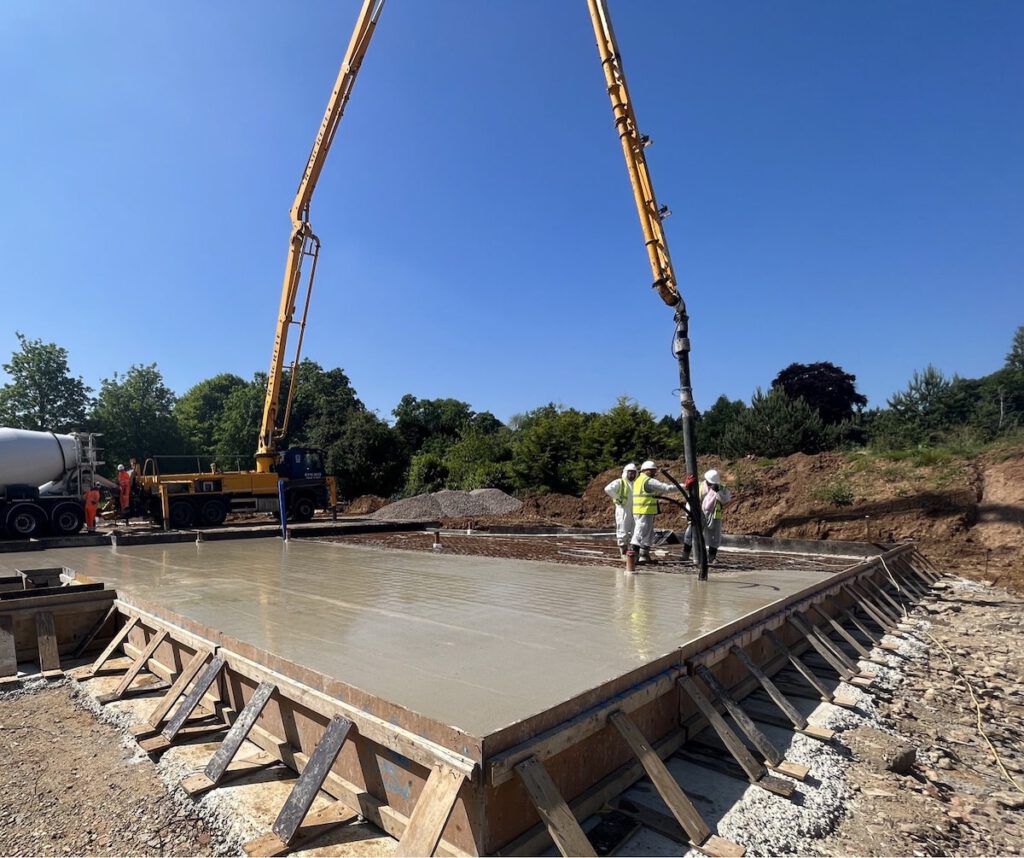As global temperatures rise and extreme weather events become more common, the UK construction industry is increasingly having to account for the effects of climate change on ground conditions. One critical yet often underestimated concern is the risk of ground heave, particularly during prolonged heatwaves.
In this article, we explore how hot, dry spells can exacerbate ground movement and what developers need to know to manage this risk on their sites.
What is Heave and Why Does it Matter?
Ground heave refers to the upward movement of the ground, typically caused when clay-rich soils absorb moisture and expand. This is the opposite of subsidence, which occurs when soils dry out and shrink. Both can lead to structural damage, but heave can be particularly problematic following a dry period when soils begin to rehydrate.
In heatwaves, the cycle of drying and rewetting becomes more extreme. Tree removal, site clearance, and climate-driven soil desiccation can all amplify the potential for significant heave during later recovery periods, particularly after summer droughts followed by wet autumns.

Why Heatwaves Increase Heave Risk
During a heatwave, moisture is rapidly lost from the ground due to evaporation and transpiration. Evaporation effects may only be relatively shallow, but transpiration can cause deep-seated issues. In cohesive soils, such as London Clay, this desiccation can cause significant shrinkage. While hot, dry weather may make for good construction conditions, with the ground firm and good access for plant, the worst case desiccation conditions are locked in if foundations are constructed at this time. Once the heatwave ends and rainfall returns, these soils may rehydrate and swell, causing upward pressure on foundations.

Understanding Tree Influence Zones
Tree roots can extend well beyond the visible canopy and affect soil moisture at depth. During a heatwave, trees are put under significant stress and they will draw as much moisture as possible from the ground around their roots. Subsequently removing trees or altering vegetation cover can create an imbalance in soil moisture, triggering heave years after the initial works as the moisture seeps back into the soil dried out by the trees. Understanding tree influence zones and their effects is essential during the early design stages.
Impacts on Construction during a Heatwave
Developers should be particularly vigilant on sites with:
- Woodland or mature vegetation
- High plasticity clay soils
- Existing signs of ground movement or cracking nearby
- Minimal foundation depths or poor ground engineering
Shallow foundation types are particularly prone to both the subsidence effect during the hot weather and the subsequent heave, both when present at the time of construction and in the future when these conditions occur. Since these events are expected to become more extreme, these risks are only likely to increase. The cost of ignoring these risks can be severe, ranging from cracking to total structural failure. It also increases the chance of disputes with insurers or warranty providers.
Best Practice for Heave Risk for Developers
To mitigate heave risk, developers should:
- Conduct thorough site investigations: Include soil classification, Atterberg Limits, Water Content profiling and tree surveys.
- Design with seasonal variation in mind: Use heave-resistant foundation systems like piled rafts.
- Engage a geotechnical engineer early: Tailored solutions can reduce risk and long-term costs.
- Use appropriate heave protection measures: This includes heave specific materials.
- Model climate-related ground behaviour: Incorporate changing weather patterns and long-term forecasts into risk assessments.
How can your foundation choice help with heave
SPEEDECK specialise in engineered foundation solutions that consider both current and future ground behaviour. From an in-house geotechnical team, we can produce ground and tree influence assessments to help developers reduce risk, stay compliant, and build with confidence, even on the most challenging sites.
Interested in discussing a project? Enquire now to speak with our expert team about mitigating heave risk on your development.







